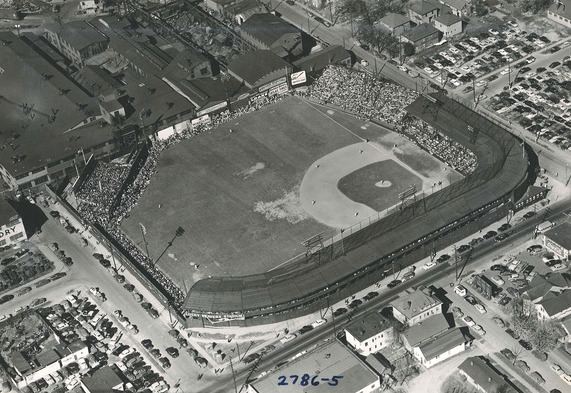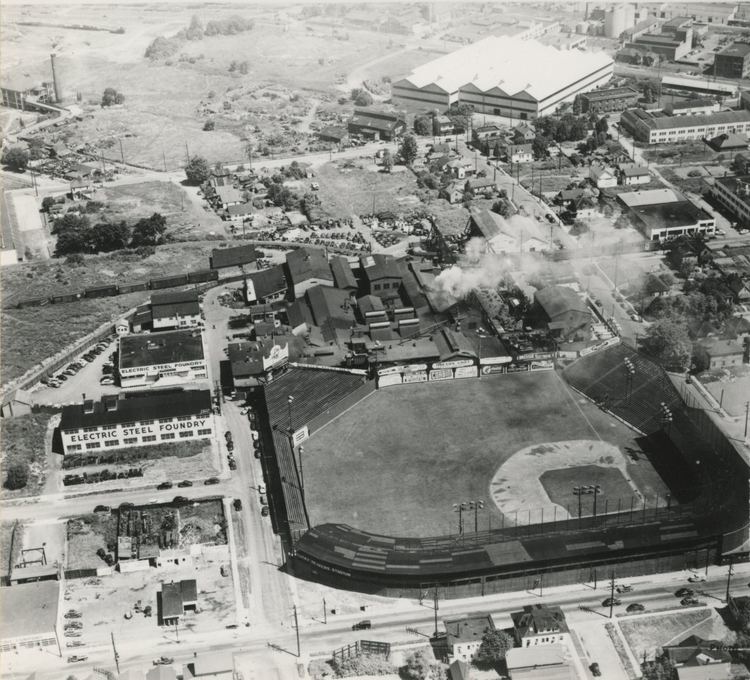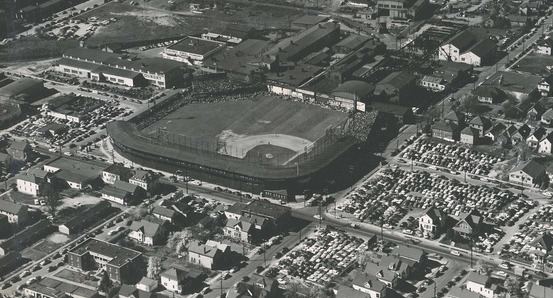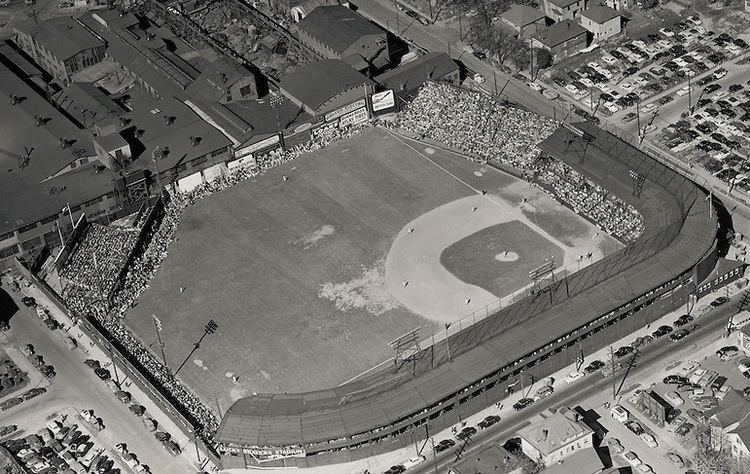Surface Grass Closed 1956 Capacity 12,000 | Broke ground 1901 Opened 1901 Demolished 1956 | |
 | ||
Location NW 24th & VaughnPortland, Oregon Owner E. I. Fuller, C. F. Swigert Field size Left 331 ft (101 m)Center 368 ft (112 m)Right 315 ft (96 m) Similar Delta Park, Joe Etzel Field, St Johns Racquet Center, Pamplin Sports Center, Meriwether National Golf Club | ||
Vaughn Street Park was a baseball park located in Portland, Oregon. It opened in 1901, and was torn down in 1956. Its primary tenant was the Portland Beavers Pacific Coast League team. During a stretch when the club was tagged as the "Lucky Beavers", the ballpark was also sometimes called Lucky Beavers Stadium.
Contents

Today, the site is an industrial property, with no traces of the stadium remaining except for a plaque.
Early history

The stadium was built in 1901, financed by E. I. Fuller and C. F. Swigert, two owners of trolley lines that ran nearby. The ballpark was on a block bounded by Northwest Vaughn Street (south), Northwest 24th Avenue (east), and Northwest 26th Avenue (west), with home plate near the southeast corner. The two financiers hoped to profit from professional baseball, both at the box office and via fares from their trolley lines. In 1896, Portland's former professional baseball team had folded; a new team, the Portland Webfoots, debuted in 1901. This team would go on to win the Pacific Northwest League title that year. The following year, the league merged with the California League to become the Pacific Coast League; the Webfooters, after several name change, settled on the name Portland Beavers.

Initially, the stadium had a single 3,000-seat grandstand behind home plate; seating was expanded to 6,000 seats in 1905. That year, Portland hosted the Lewis & Clark Centennial Exposition, and the stadium was used for the National Track and Field championships, held concurrently. During that event, baseball was temporarily played on the grounds of the Portland Athletic Club (later the Multnomah Athletic Club), on a field that is now the site of Providence Park. With the construction of additional seating in 1912, Vaughn Street Park's capacity grew to 12,000 spectators.
1920s–'30s

In 1926, the stadium received its first serious local competition when the larger and more modern Multnomah Stadium (now Providence Park) opened approximately two miles to the south. It was expected that the baseball team, now christened the Beavers, would move to the newer stadium, but the team elected to stay at Vaughn Street. Multnomah Stadium was instead used for other sporting events, including college football games and greyhound racing.
Vaughn Street Park occasionally hosted other events besides baseball; several prizefights were held there.

Among the notable players to play at Vaughn Street, either for the home team or for the visitors, are Satchel Paige, Joe Tinker, Jim Thorpe, and Ted Williams.
1940s–'50s

The stadium also became, however briefly, the home of the Portland Rosebuds, a team owned by Jesse Owens. The Rosebuds were part of the West Coast Baseball Association, an all-black league headed by Abe Saperstein, the owner of the Harlem Globetrotters; the league was disbanded after only two months.
In 1947, the left field bleachers burned. In 1955, the stadium was bought by new owners, who later announced that they would tear it down; the Beavers moved to Multnomah Stadium in 1956. The stadium was razed that same year. The grass field from Vaughn Street was transplanted at Multnomah Stadium, but in 1969 it was removed when the newer facility installed an artificial turf.
Dimensions
The dimensions were hitter-friendly:
Left field – 331 feet (101 m), wall 20 feet (6.1 m) highCenter field – 368 feet (112 m), wall 20 feet (6.1 m) highRight field – 315 feet (96 m), wall 30 feet (9.1 m) high